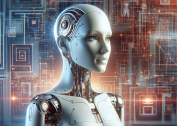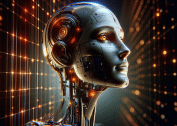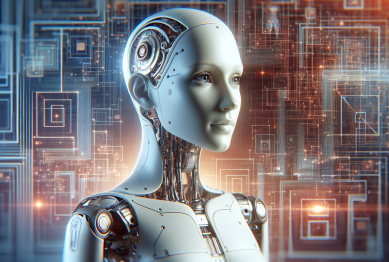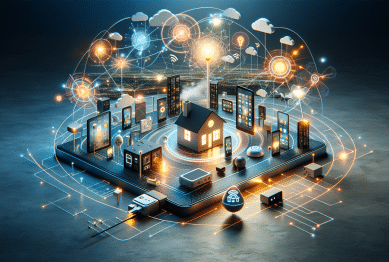Explore insights into artificial intelligence tools revolutionizing productivity, workflow automation, and daily tech habits. Learn how recent advances in AI, deep learning, machine learning, and natural language processing are making a practical difference.
What Modern AI Is and Why It Matters
Artificial intelligence (AI) now shapes nearly every aspect of daily technology, from the devices carried in pockets to the systems powering businesses. The term encompasses a range of smart technologies, including machine learning, natural language processing, and robotics, each designed to mimic or augment human thinking and actions. The emergence of generative AI tools has captured public attention due to their creative potential. The focus, however, extends far beyond novelty—today’s AI is used to improve outcomes in education, healthcare, finance, and more, quietly transforming the way tasks are completed and decisions are made (Source: https://www.nature.com/articles/d41586-023-01289-x).
In business, AI is often synonymous with automation and predictive analysis. Algorithms sort through vast data, drawing patterns and flagging insights that would take people far longer to identify. Automating repetitive or complex decision-making frees teams to focus on strategy and creativity, rather than on being buried by clerical work. For individuals, the growth of AI tools means technology is becoming more attuned to everyday needs, making tasks like calendar management, email sorting, or even budgeting, more efficient and less time-consuming. These systems are constantly improving as they learn from user input.
The power of current AI stems from its ability to continuously learn. Thanks to advances in deep learning, modern systems adapt quickly, gaining context from fresh data and refining their outputs. This cycle—automation feeding experience, which in turn drives smarter automation—sets the stage for rapid, ongoing change. Practically no industry stands untouched by these developments, highlighting the rising demand for digital literacy and adaptability in the workforce. Those learning to navigate or implement smarter AI workflows open doors to entirely new types of opportunities.
AI Tools For Productivity and Workflow Automation
AI-powered productivity tools are transforming how work is approached. Leading platforms incorporate smart scheduling assistants that analyze routines, propose optimal meeting times, and flag schedule conflicts before they arise. Document and email management have become more streamlined through natural language processing, auto-categorizing information, and prioritizing responses based on urgency and context. As teams work remotely or in hybrid setups, collaboration platforms are integrating real-time translation, smart note summaries, and task trackers powered by AI, reducing friction and enhancing efficiency for diverse, distributed teams (Source: https://www.brookings.edu/articles/a-blueprint-for-the-future-of-ai/).
One growing trend is the use of AI chatbots and virtual assistants. These tools manage customer queries, route issues, and handle routine troubleshooting steps—all before a human steps in. This doesn’t just cut response time—it frees up skilled team members for higher-level problem solving and personal interaction. AI-based project management platforms can forecast project risks and detect bottlenecks, suggesting adjustments before timelines are jeopardized. Automation, once reserved for repetitive tasks, is now smart enough to tackle nuanced, multi-step workflow processes.
The push for smarter workflows fueled the rise of low-code and no-code tools, enabling even non-technical professionals to automate routines. Users can build custom workflows with drag-and-drop simplicity, using underlying AI to power triggers, decisions, and tailored notifications. Even creative fields are benefitting—with AI supporting video editing, graphic design, and content planning. The focus is shifting from what AI can do for organizations to how individuals can leverage these tools for personal productivity gains, too.
Natural Language Processing: Making Tech More Human
Natural language processing (NLP) is the field within AI that deals with understanding and generating human language. It powers widely used applications such as voice-activated assistants, smart search engines, and automated translation services. The technology continues to evolve, now moving beyond basic recognition to real context awareness—grasping slang, intent, sentiment, and regional nuance in text or speech. NLP enables more natural and fluid communication between people and devices, removing barriers that once slowed information retrieval or digital access.
Examples are increasingly visible, from AI composing email replies to summarizing lengthy documents, to generating meeting notes or highlighting key decisions from conversations. These tools save hours each week, especially for those dealing with high volumes of communication. Chatbots, powered by NLP, provide 24/7 help desks, onboarding assistance, and even language learning experiences tailored to user language preferences. There’s growing emphasis on ethical NLP research as well, focusing on reducing bias and ensuring that conversational agents respond appropriately and inclusively (Source: https://www.sas.com/en_us/insights/analytics/what-is-natural-language-processing-nlp.html).
With machine understanding of language advancing, the boundaries of what technology can do are also expanding. Voice assistants now manage complex multi-step tasks, such as setting reminders, navigating apps, or conducting research, all through conversational prompts. In customer service, text analysis detects frustration or confusion, prompting empathetic responses and timely escalations. These advances bring technology closer to the ideal of being an unobtrusive, intuitive helper—one that enhances, rather than interrupts, daily routines.
Machine Learning and Deep Learning: Core Drivers Behind AI
Machine learning is at the core of AI’s recent explosion in capability. Unlike traditional software built on fixed logic, machine learning models are designed to find patterns in massive datasets, adapting their behavior over time. Whether it’s predicting consumer trends, flagging fraud in financial transactions, or recommending streaming content, the principle is similar: the system learns from past data to make future predictions. Deep learning, a subset of machine learning, uses layered artificial neural networks to process complex data like images, sound, or natural language, driving rapid advances in fields as diverse as diagnostics, autonomous vehicles, and content generation.
Recent developments in deep learning architectures have allowed for even more accurate recognition, planning, and decision-making. For example, convolutional neural networks excel at analyzing visual data and are used in applications ranging from security cameras to medical imaging. Meanwhile, recurrent neural networks process sequences—perfect for time-series forecasting, speech recognition, or translating languages. This technology underpins much of what’s perceived as AI’s creativity. The systems used by generative AI, like those creating music or art, depend on vast sets of training data and complex model architectures.
The blend of machine learning and deep learning is what makes today’s AI tools so powerful. Industries such as healthcare are leveraging pattern recognition for faster, more accurate diagnoses, while logistics companies use AI forecasts to optimize routes and reduce emissions. Creative professionals use AI to ideate, prototype, and adapt content for diverse audiences. As machine learning tools become more accessible through cloud-based platforms and open-source libraries, adoption grows—making technical and non-technical users alike part of the AI revolution (Source: https://www.datasciencecentral.com/how-machine-learning-and-deep-learning-help-us-in-real-life/).
Ethics, Privacy, and the Responsible Use of AI Technologies
The growing sophistication of AI brings new responsibilities and challenges, chief among them being ethics and privacy. Questions about how data is collected, processed, stored, and used are at the heart of public debate. Regulatory bodies and organizations worldwide are investing in guidelines to ensure ethical development and deployment. Transparency, explainability, and accountability have become key pillars for responsible AI. Solutions include data anonymization, strict consent requirements, and algorithmic audits to prevent discriminatory or unintentional outcomes (Source: https://www.nist.gov/artificial-intelligence/ai-risk-management-framework).
Developers and users must consider AI’s societal implications. Biased training data can lead to unfair recommendations or limited access for certain groups. Automated decision-making impacts everything from loan approvals to parole hearings. Awareness of these issues is prompting demand for rigorous testing, external review, and ongoing education. Leading organizations are now establishing ethics boards or internal review processes to guide the development and use of AI across products and services. Open-source communities and academic researchers contribute to the conversation, sharing best practices and ethical standards.
Privacy concerns have never been more pronounced. Advances in AI mean that more personal data is accessible to more systems than ever before. Modern privacy laws give individuals rights over their data, but practical protection requires vigilance from both users and developers. Tools for managing digital footprints, anonymizing data, and securing personal information are now built into major AI platforms. These steps are essential to sustain public trust and maximize the benefits that AI brings to society at large.
How To Keep Up: Skills and Learning Resources For the AI Age
Navigating the AI-driven world requires a willingness to learn and adapt. Many organizations, universities, and even global corporations offer structured online courses in AI, machine learning, and related technologies. These range from fundamentals, like understanding how algorithms learn, to advanced applications in natural language processing or robotics. Key skills sought in the workforce include data analysis, critical thinking, ethical reasoning, and the ability to work alongside AI-powered tools in interdisciplinary teams (Source: https://www.coursera.org/learn/ai-for-everyone).
Self-guided learning has never been easier. Platforms feature interactive exercises, real-world datasets, and collaborative coding communities. Large tech companies maintain AI learning hubs, while nonprofit initiatives provide resources to underrepresented groups aiming to close knowledge gaps. Those looking to integrate AI at work—including workflow automation or process optimization—often find practical tutorials, video walkthroughs, and free open courseware on major educational sites. Staying up to date may mean subscribing to research journals, following thought leaders, or attending virtual conferences focused on responsible innovation.
Learning is ongoing. With new releases and updates coming continuously, embracing a growth mindset pays off. Whether you’re starting in a technical field or are a professional interested in how AI impacts marketing, design, healthcare, or administration, resources exist for every background. Curiosity and adaptability, combined with reliable sources, can help anyone thrive in this new tech landscape. As more individuals engage with AI—both as creators and as users—the reach and utility of these technologies only continue to expand.
References
1. Castelvecchi, D. (2023). Artificial intelligence: How GPT-4 is shaping the future. Nature. Retrieved from https://www.nature.com/articles/d41586-023-01289-x
2. West, D. (2023). A blueprint for the future of AI. Brookings Institution. Retrieved from https://www.brookings.edu/articles/a-blueprint-for-the-future-of-ai/
3. SAS Institute. (n.d.). What is natural language processing (NLP)? SAS Insights. Retrieved from https://www.sas.com/en_us/insights/analytics/what-is-natural-language-processing-nlp.html
4. Data Science Central. (2022). How machine learning and deep learning help us in real life. Retrieved from https://www.datasciencecentral.com/how-machine-learning-and-deep-learning-help-us-in-real-life/
5. National Institute of Standards and Technology. (2023). AI risk management framework. Retrieved from https://www.nist.gov/artificial-intelligence/ai-risk-management-framework
6. Ng, A. (2023). AI For Everyone [Online course]. Coursera. Retrieved from https://www.coursera.org/learn/ai-for-everyone









